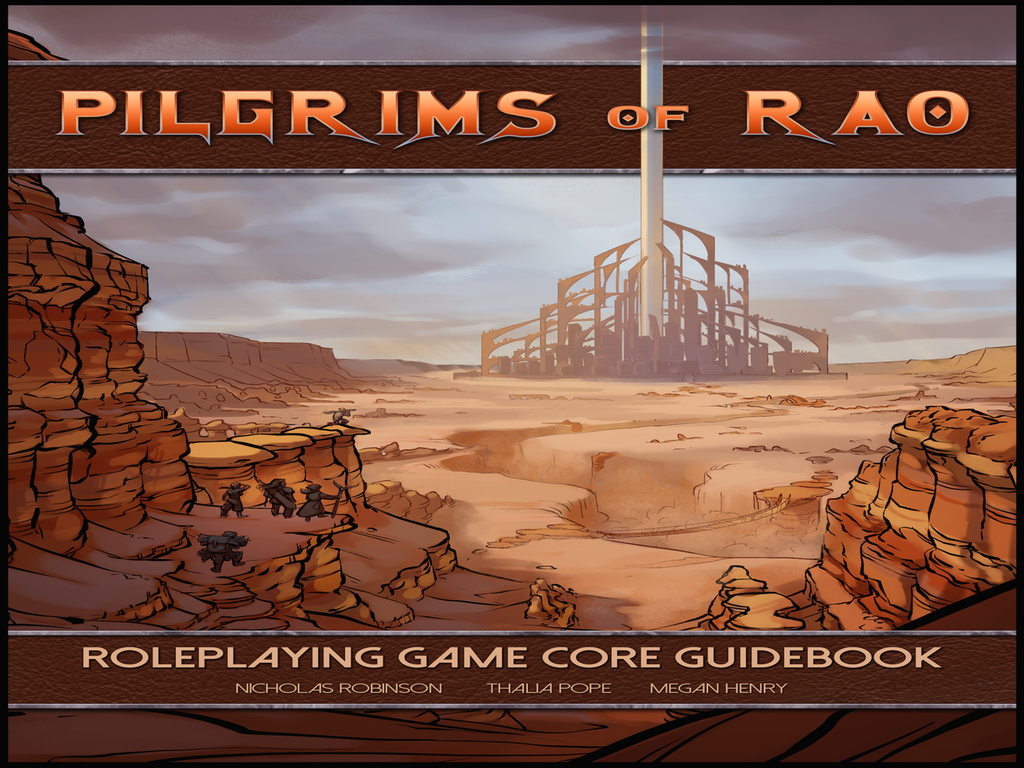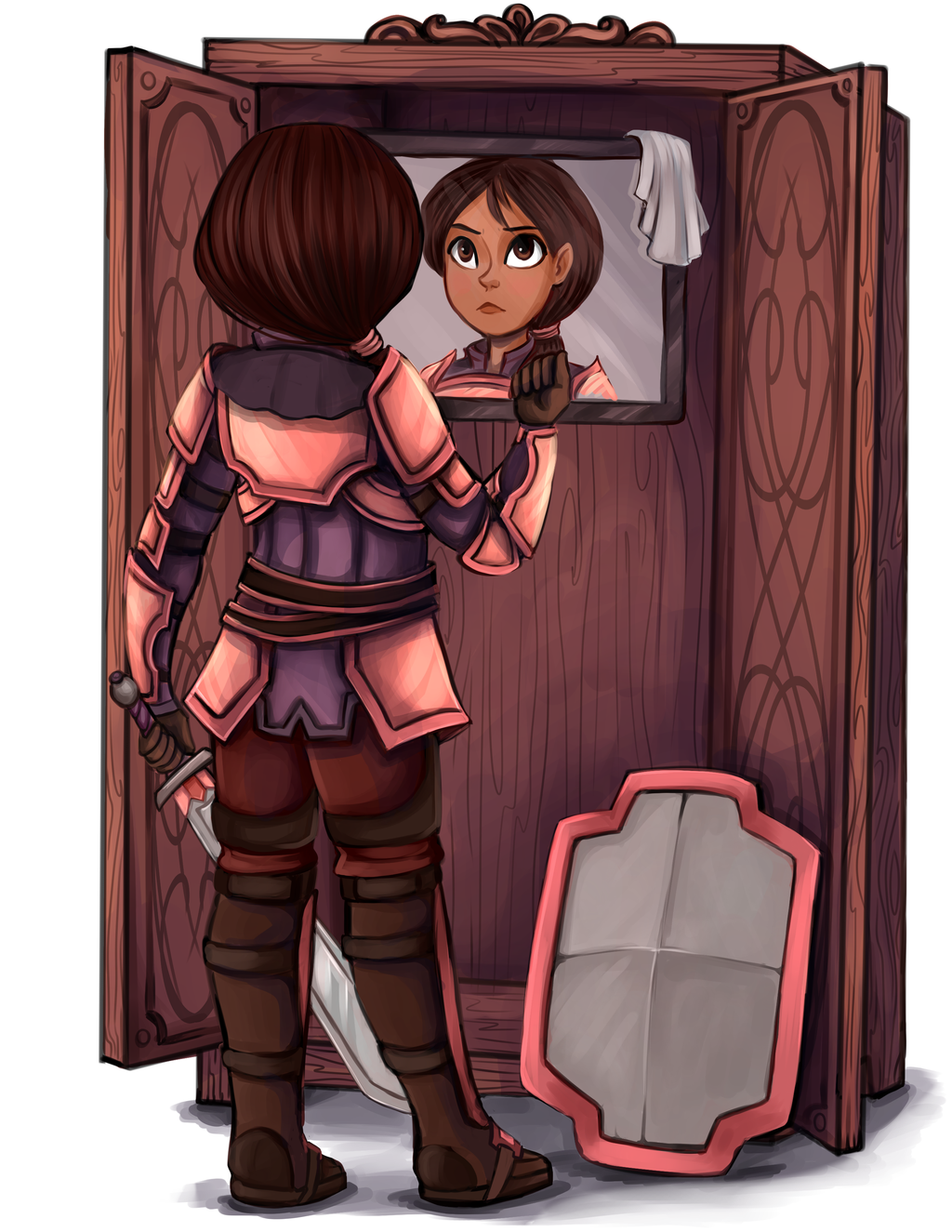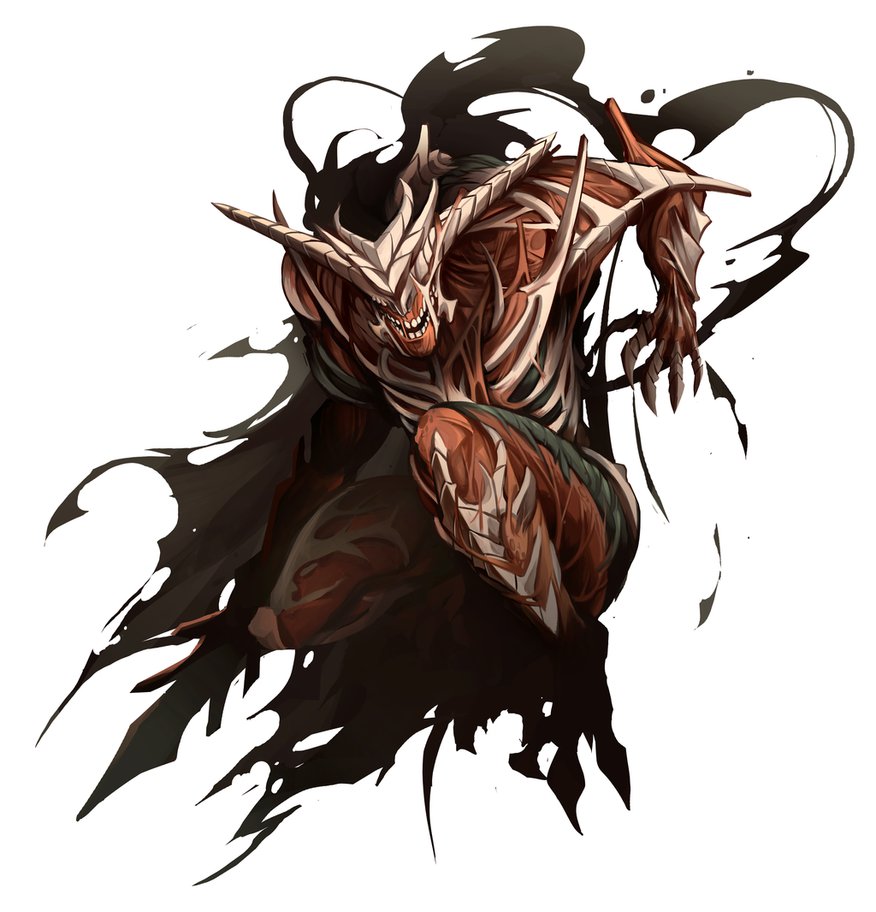
19 Sep An Interview with the creator of Pilgrims of Rao RPG!
I recently interviewed Nicholas Robinson, the creator of Pilgrims of Rao RPG, about his new game on Kickstarter (there’s still a bit over 24 hours to go, so check it out!). It’s an interesting game, and Nicholas is a really passionate creator, so I’m really pleased to be able to give him this interview!
~Oliver
1 – What brought you to RPGs?
I played a lot of games growing up. Board games, video games, card games, you name it, I played it. One of my favorite things to do in these games was create a story for the actions taking place. It was not just another game of Risk, it was really an epic war with two young ambitious generals trying to unite the world before their ultimate final showdown with one another. Or it was not just a match of Yu-Gi-Oh!, it was part of a larger campaign with some decks set up as bosses that could break the rules, and only by beating them all could the players claim the championship. My friends and I were especially fond of escalating campaigns where you rose from nothing to challenge the biggest, baddest enemies you could and take them down. That, inevitably, brought me to tabletop RPGs.
I remember the static electrifying my brain the first time I played a tabletop RPG. It gave me all the official structure I needed to build my own campaigns, plus for the first time I had genuine miniatures instead of pieces taken from other games and mental images. My discovery of tabletop RPGs was like a baseball player who had only ever played the sport based on what he heard from other people and then one day he finds himself in Wrigley Field. I took to the new genre and never left.
 2 – Why create my own RPG?
2 – Why create my own RPG?
Creating my own RPG came about as the natural fusion between my love for the genre and my passion for creating games. I rarely used pre-made campaigns in RPGs. I much preferred making my own with new, creative twists using the game rules. If the area suffered a storm, I made up mechanics for trees to move and rivers to flow. If a gate were breached, I made up rules on projectiles and force. Whatever the game did not have, I made.
Over time I took the mechanics I made that were the most fun and effective in my games, and I began to combine them. My ultimate goal was to create a single game that encompassed everything I was looking for in my games. I picked a core set of mechanics around which all other rules should be based, tweaked rules as necessary, plucked some out and planted new ones in, and built the Alpha for what would become Pilgrims of Rao.
Pilgrims of Rao is designed using mechanics that I have fun using and that anyone can pick up on. I wanted to make a game where I could play together with my friends where we would not have to leave anyone out because they were new. Video game adaptations of tabletop RPGs, like Baldur’s Gate, have this idea perfected. It is you and your friends discovering the world together and fighting against the game. When you succeed, you succeed together with no division between the players and the Game Master because there is no Game Master. Maybe some day someone will play Pilgrims of Rao and be inspired to create
their own game as well.
3 – What is Pilgrims of Rao?
Pilgrims of Rao is a tabletop role playing game designed by me that is currently seeking funding on Kickstarter. The game Core Guidebook is written by me, edited by Thalia Pope, and illustrated by many wonderful artists, including our cover artist and recurring interior artist, Megan Henry. The game uses a brand new engine that makes game play quick and easy without needing a GM to moderate, procedurally generates content such as rooms and loot, and is flexible enough to allow for a wide variety of campaigns and home-brewed content (if you should so desire). The world of Aetherian is tattered, scarred and broken, left untouched for a millennia. Only now are humans braving the outside world once again. Players take on the role of pilgrims, human heroes on a journey to reclaim humanity’s glory from the ruins. With the power of the Echo Stones that allow us to “level up” and attain the powers of our divine heritage, it
might just be possible.
In Pilgrims of Rao, humanity teeters on the brink of extinction after a failed war against the gods a millennia ago left only scattered pockets of survivors around the world. We built gates to the very heavens and planes beyond for our assault, and in our short-sightedness we left them open behind us. Hel, creatures of darkness trapped since the dawn of time, surged forth from our gates into the mortal realm. They took everything from us. We lost our power, our civilization and its technology, and even Rao itself. For a thousand years humans have lived in fear of the things that go bump in the night.
But not all humans are afraid. We are no longer powerless. With the light of the Echo Stones as our guide, we will retake our world. We will charge into the darkness and take back our home. We are the Pilgrims of Rao.
4 – Main are the mechanics of Rao in a nutshell?
Most situations in Pilgrims of Rao can be solved by one of three types of rolls: a d8 Performance Roll, a d6 Effect Roll, or Role Play. A Performance Roll tells you if you perform an action correctly. An Effect Roll tells you how well you perform an action. And Role Play tells you how you performed an action. Be creative.
For example = Making an attack is a Performance Roll, your d8 results against the defender’s roll, and the higher one wins. Dealing damage is an Effect Roll, your xd6 against the defender’s armor or weave, and you deal damage if your roll exceeds their armor or weave (weave is magic defense).
Finally, you Role Play by telling your friends how you just chopped that Dragonkin in half with an axe, wood splintering beneath your blow, the wicked creature letting out one final shriek before the impact knocked it to the earth. Performance Rolls and Effect Rolls are altered by modifiers such as the quality of your weapon and Strength attribute in this case.
- Other core mechanics include (bullet list):
- 24 hour day-night cycle displayed with a simple 12 Light boxes where you clear a box as Light wanes in the day and fill a box back up as dawn
approaches at night (Night is when the monsters come out). - 3 Unique Encounter types, Combat, Communication, and Exploration.
- A Legacy system that allows characters who have completed their adventures to pass the torch on to the next generation. The new character receives
bonuses based on the previous character and the Feats (earned for great deeds) cashed in during character retirement. - Rock-paper-scissors style advantage system for encounters that is immediately recognizable and understandable.
- Randomized game world and encounters, and procedurally generated loot.
- And no DM/GM required to play. It is players against the game.
5 – What sort of experience does Rao provide?
The game is played by 2-9 players in sessions with a recommended session length of 30-90 minutes, but really you can keep playing as long as everyone is having fun. Players experience the game through two main methods of play selected at the start of each session. Players can choose to take on a Scenario, a one-shot adventure meant to be completed in a single session, or a Campaign, a long-term series of narrative choices interwoven with game play meant to be completed over the course of several sessions. A Scenario can be anything from a snapshot of a larger adventure to something entirely unrelated, like a game of football or outlasting a zombie horde for as long as possible. Think of Scenarios like slices of the world utilizing the main game’s mechanics. A Campaign follows a particular long-term objective and the effects of player choices on the world around them as they seek that objective. Campaigns are more in line with traditional epic RPG tales with heroes rising from level 1 to 10.
Players are open to create their own content for either session type as
well.
Pilgrims of Rao provides a challenging cooperative experience for you and your friends. Every encounter features tense strategic decisions that could make or break your adventure. Did you send the dagger-wielding rogue in first to fight a group with spears? Yes you did, but you have a power prepared that will let him slip behind the enemies and open them up for your warrior. There is no joy quite like seeing a crazy plan succeed and having your team trump seemingly insurmountable odds.
Last, but oh so certainly not least, there is the thrill of random loot drops. Every piece of loot you find in the game is procedurally generated using a short series of rolls and information found on the item provider’s entry (whatever gives you the item, whether it is an enemy, a shop, or a chest). I love playing games with a random loot mechanic. I have more hours logged in Borderlands and Diablo than is probably healthy for a human being. I brought the loot mechanic over to Pilgrims of Rao and streamlined for quick use in a tabletop game.
Game play is quick, clear, and concise. No matter what you are doing, the ultimate objective of your session is to have fun.
 6 – What hurdles had to be overcome?
6 – What hurdles had to be overcome?
The biggest hurdle of them all was convincing everyone I was serious. I mean, this is my debut professional game, so especially early on in public development people saw me as an unknown variable. They did not know what to think. We got through that when I presented the game’s Alpha and some of the early art from artists I have had the pleasure to work with. Then the project picked up traction. By the time we got to the Beta I had triple my normal traffic and daily messages flying around on every site about the project.
7 – What is your favourite RPG (not including your own)?
Ooh, that is not an easy one. I am going to say Munchkin. Munchkin is not a traditional tabletop RPG, rather it is more of a gateway RPG. It is easy to get people into because it is simple, quick, and funny while still retaining the core mechanics of RPGs. I know more people who had their first RPG experience with munchkin than any other game. I have it to thank for bridging the gap between playing board games and tabletop RPGs, and for getting friends hooked on the genre.
Nick R
Pilgrims of Rao



No Comments